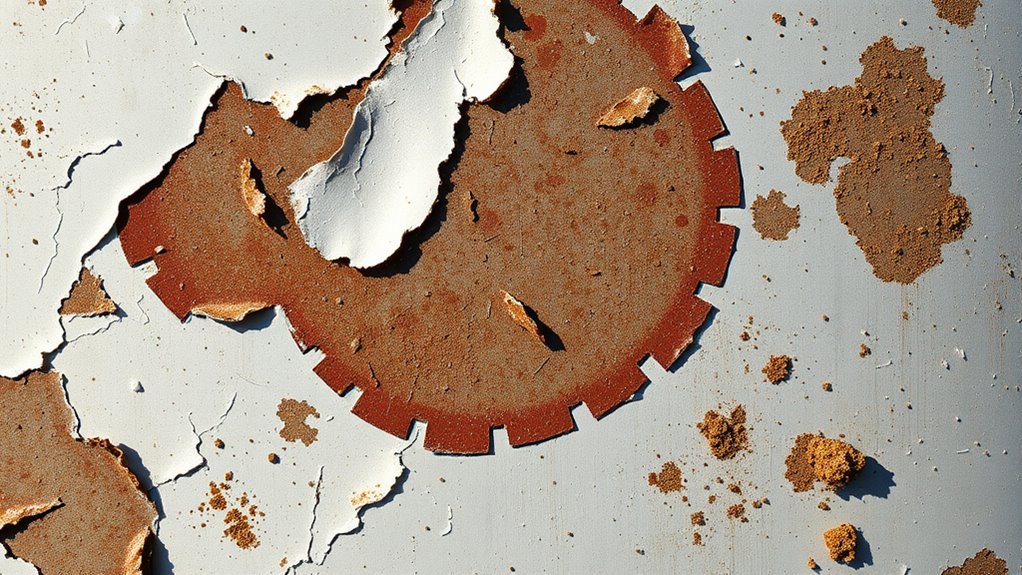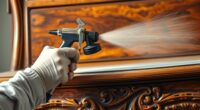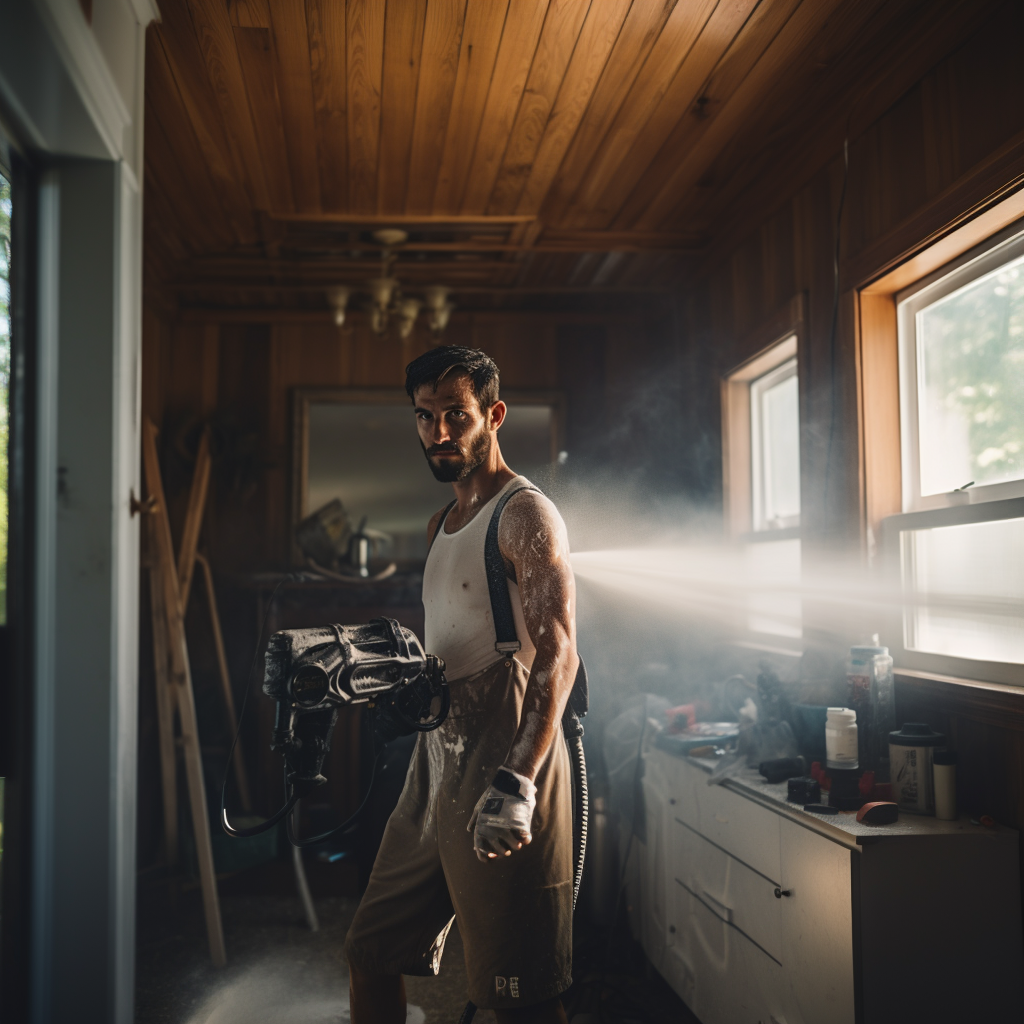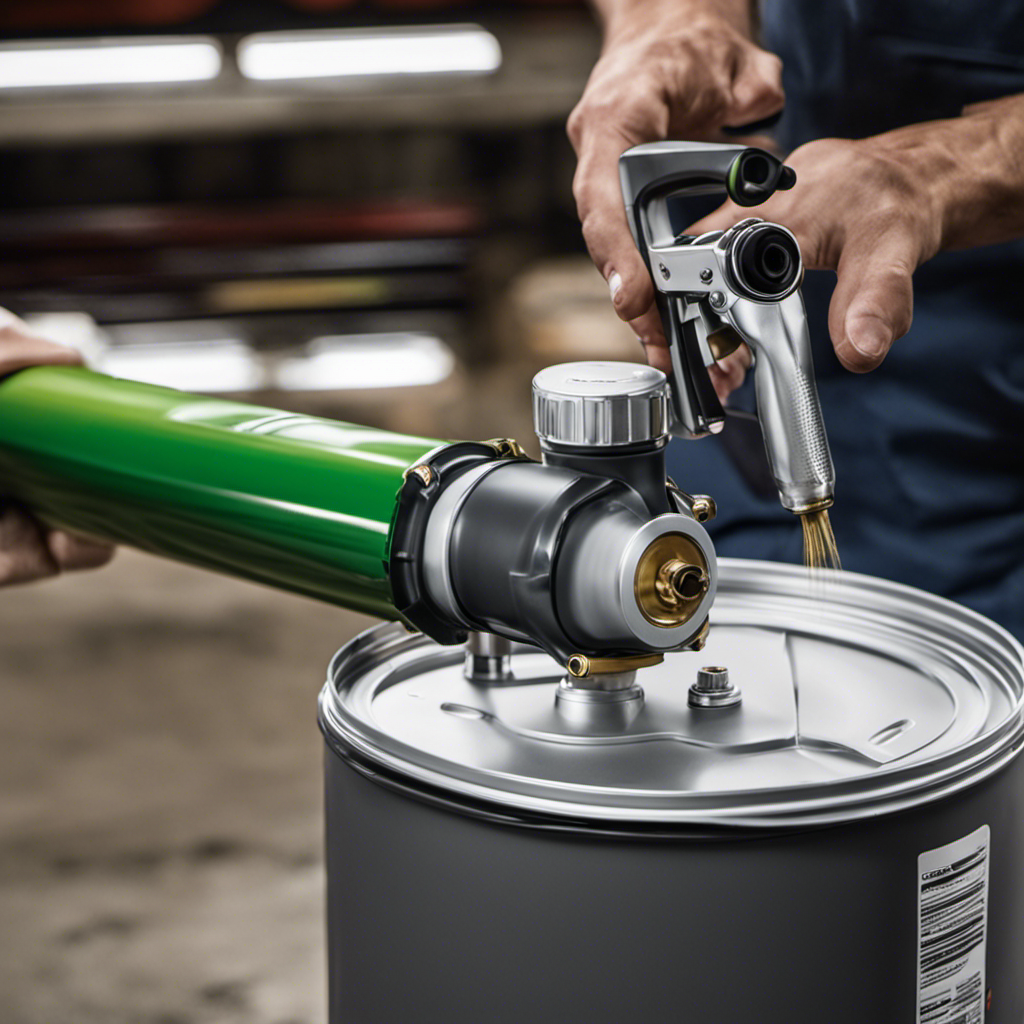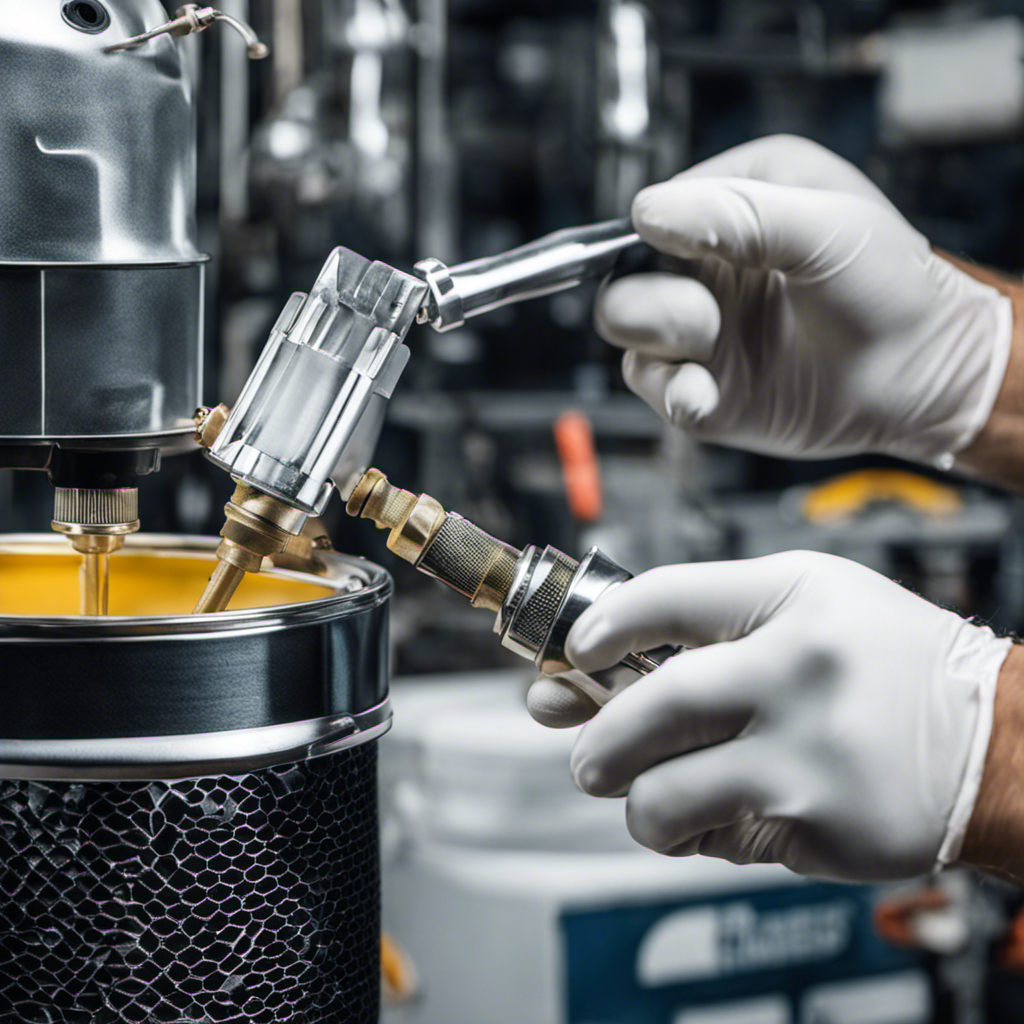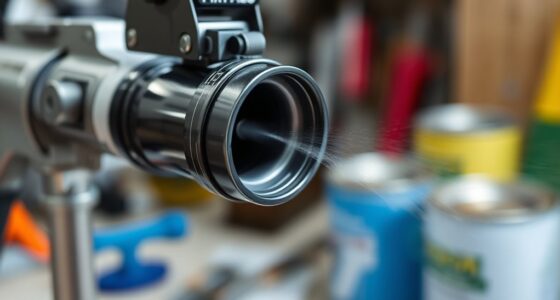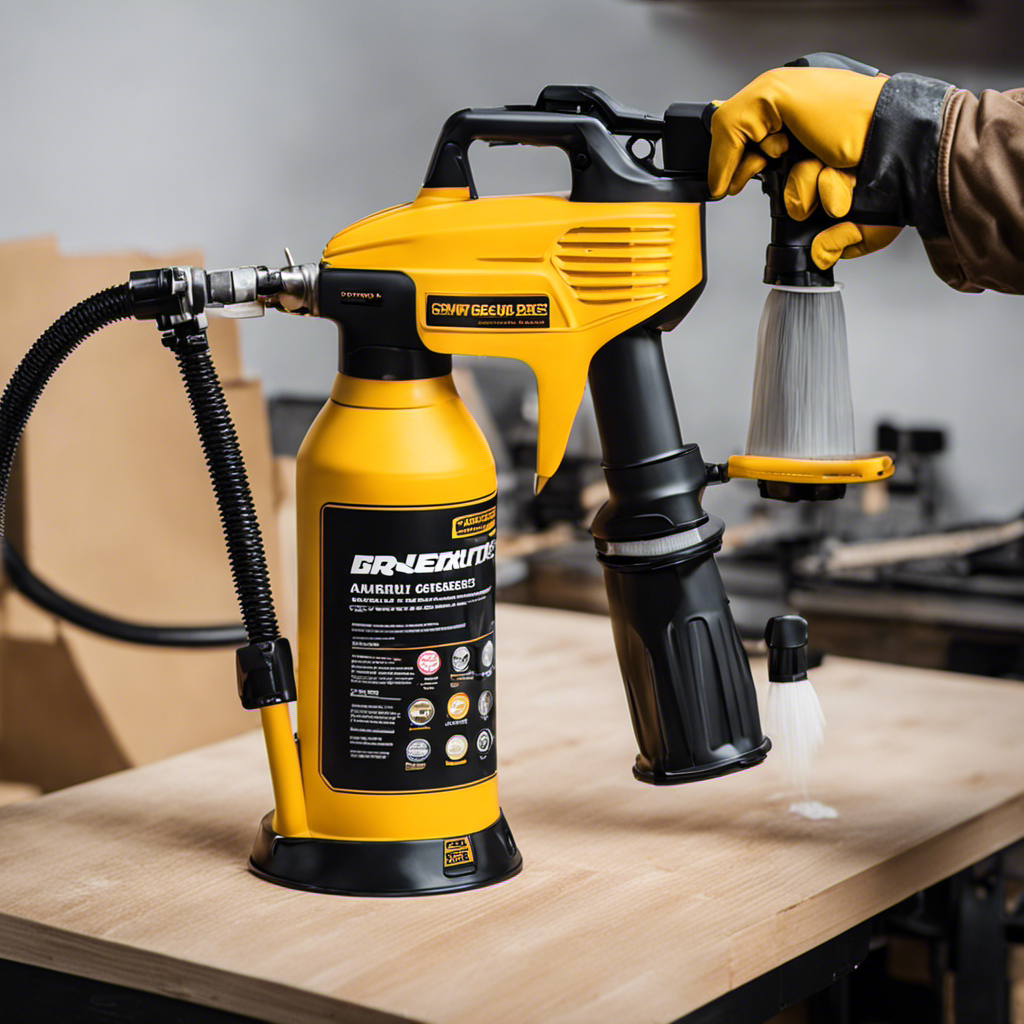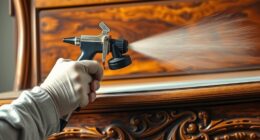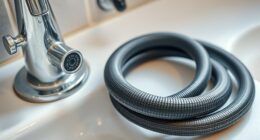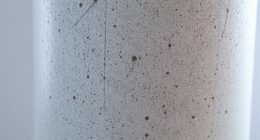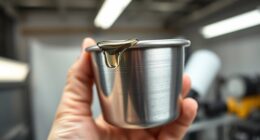If your paint isn’t sticking, it’s likely due to surface preparation issues, such as dirt, grease, or old flaky paint left behind. Environmental factors like high humidity or painting on a damp surface can also cause poor adhesion. Make sure you’ve chosen the right primer for your surface and properly cleaned, sanded, and dried it before applying paint. For more tips on fixing adhesion problems and ensuring a lasting finish, keep exploring these helpful solutions.
Key Takeaways
- Ensure the surface was properly cleaned and free of dirt, grease, or loose paint before priming and spraying.
- Check if the surface was adequately sanded or scuffed to remove gloss and promote better adhesion.
- Confirm the primer used was suitable for the surface type and applied correctly, with proper drying time.
- Avoid painting in high humidity, extreme temperatures, or on damp surfaces, which hinder curing and bonding.
- Repair any surface damage like cracks or holes prior to spraying, and ensure the surface is completely dry.
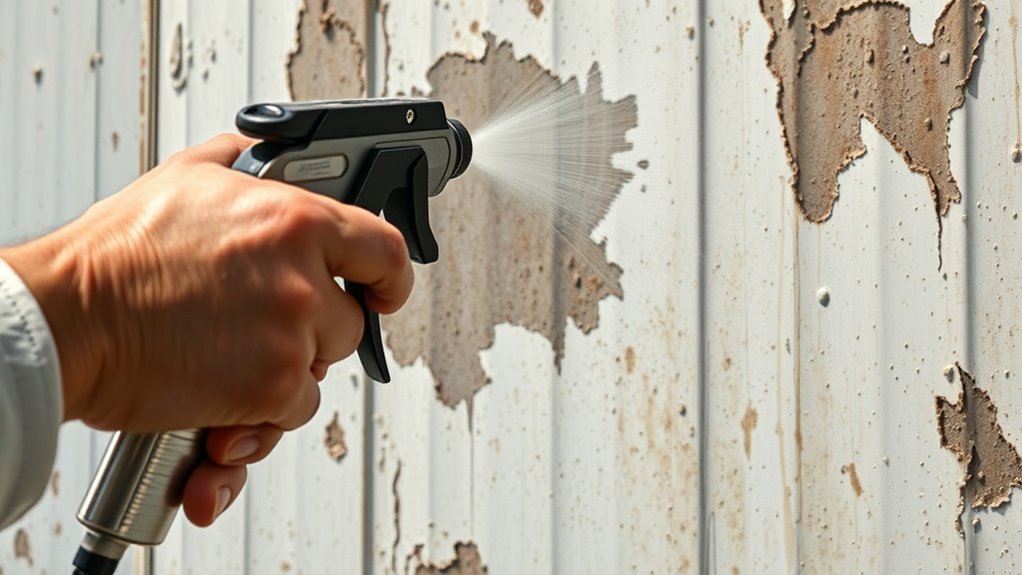
Poor paint adhesion can be frustrating, but understanding the common causes helps you troubleshoot effectively. One of the most critical steps in guaranteeing good paint stickiness is proper primer application. If you skip or rush this step, the paint may not bond well to the surface, leading to peeling, cracking, or flaking over time. Primer acts as a bonding agent, filling in tiny pores and creating a uniform surface that enhances paint adhesion. When applying primer, make sure you choose the right type for your surface—whether it’s wood, metal, or drywall—and follow the manufacturer’s instructions carefully. Applying primer too thinly or too thickly can compromise its effectiveness, so use a consistent technique, and allow it to dry thoroughly before painting. Additionally, selecting a high-quality primer designed for your specific surface can significantly improve adhesion and durability.
Surface preparation is equally essential for good adhesion. Before you start painting, you need to clean the surface thoroughly to remove dirt, grease, oil, or any loose paint. Failing to do so can cause the new coat to slide or peel off. Use a mild detergent or a specialized cleaner suited for your surface type, and rinse well. After cleaning, inspect the surface for any damage, such as cracks, holes, or rough patches. Sanding is often necessary to smooth out uneven textures and create a better grip for the primer and paint. Be sure to remove any dust after sanding because residual debris can prevent proper adhesion. If you’re working with glossy surfaces, lightly scuff the area with fine-grit sandpaper to dull the shine, consequently promoting better bonding.
Temperature and humidity also influence surface preparation and primer application. Painting in high humidity or extreme temperatures can cause the primer and paint to cure improperly, resulting in poor adhesion. Aim to work in moderate conditions—ideally between 50°F and 85°F—with low humidity for the best results. When you prepare the surface, ensure it’s dry and free of moisture; painting on damp surfaces can trap water underneath, leading to adhesion failure. Being aware of the paint technology and how it interacts with environmental factors can help you achieve a lasting finish.
Frequently Asked Questions
Can Weather Conditions Affect Paint Adhesion?
Weather conditions definitely affect paint adhesion. Moisture interference from high humidity or rain can prevent the paint from bonding properly. Additionally, temperature fluctuations cause surfaces to expand or contract, which can lead to poor adhesion or peeling. To guarantee good results, avoid painting in very humid or cold weather, and always check the forecast. Proper surface preparation and timing can help you achieve a smooth, long-lasting finish.
Does Using Old Paint Cause Poor Sticking?
Using old paint can definitely cause poor sticking because paint age affects its quality. Over time, paint can dry out, separate, or develop a skin, making it less effective at adhering to surfaces. If your paint is past its prime or has been stored improperly, its quality drops, leading to adhesion issues. Always check the paint’s consistency, smell, and appearance before applying to guarantee it still bonds well.
Are Certain Surfaces Incompatible With Spray Paint?
Like trying to fit a key into the wrong lock, spray paint may not adhere well if the surface isn’t compatible. Some surfaces, like glossy plastics or greasy metals, resist paint unless you use a suitable primer. Always check surface compatibility before painting, and apply a primer if needed. Skipping these steps can cause poor adhesion, turning your spray project into a frustrating puzzle that won’t quite fit.
How Does Surface Preparation Influence Adhesion?
Surface preparation plays a vital role in ensuring good adhesion. You should thoroughly clean the surface to remove dirt, grease, and dust, which can prevent proper bonding. After cleaning, applying a suitable primer helps create a smooth, compatible base for the paint, enhancing adhesion and durability. Skipping these steps often leads to poor paint stickiness, so take your time with surface cleaning and primer application for the best results.
Can Applying Too Thick of a Layer Cause Peeling?
Did you know that applying a thick layer increases peeling risk by up to 50%? When you spray with a thick layer, the paint doesn’t dry evenly and can trap solvents, leading to poor adhesion. This weakens the bond and causes peeling over time. Always aim for thin, even coats and let each layer dry completely before applying the next to prevent damage and guarantee a durable finish.
Conclusion
If your paint just won’t stick, don’t give up. Proper surface prep is key—around 80% of adhesion issues stem from inadequate cleaning or sanding. Remember, even a small missed spot can cause big problems later. By following these tips, you’ll boost your chances of a flawless finish. So, take your time, prep well, and enjoy the process—after all, a perfect paint job is worth the effort!
Franz came aboard the Paint Sprayer Zone team with a background in both journalism and home renovation. His articulate writing style, combined with a passion for DIY projects, makes him an invaluable asset. Franz has a knack for breaking down technical jargon into easy-to-understand content, ensuring that even the most novice of readers can grasp the complexities of paint sprayers.
